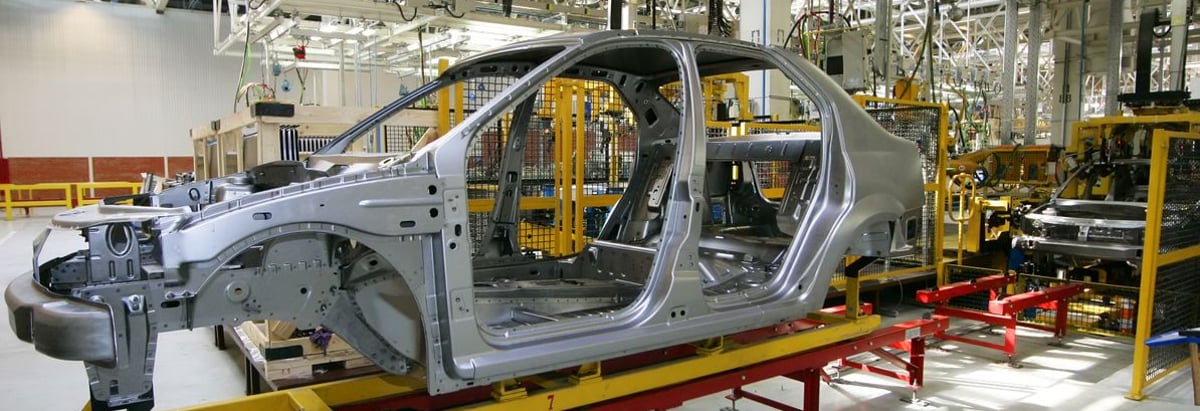Stock Analysis
Yulon Nissan Motor (TWSE:2227) Could Be Struggling To Allocate Capital

To avoid investing in a business that's in decline, there's a few financial metrics that can provide early indications of aging. Typically, we'll see the trend of both return on capital employed (ROCE) declining and this usually coincides with a decreasing amount of capital employed. Ultimately this means that the company is earning less per dollar invested and on top of that, it's shrinking its base of capital employed. So after we looked into Yulon Nissan Motor (TWSE:2227), the trends above didn't look too great.
What Is Return On Capital Employed (ROCE)?
If you haven't worked with ROCE before, it measures the 'return' (pre-tax profit) a company generates from capital employed in its business. The formula for this calculation on Yulon Nissan Motor is:
Return on Capital Employed = Earnings Before Interest and Tax (EBIT) ÷ (Total Assets - Current Liabilities)
0.0089 = NT$190m ÷ (NT$25b - NT$3.4b) (Based on the trailing twelve months to June 2024).
So, Yulon Nissan Motor has an ROCE of 0.9%. In absolute terms, that's a low return and it also under-performs the Auto industry average of 4.0%.
View our latest analysis for Yulon Nissan Motor
Historical performance is a great place to start when researching a stock so above you can see the gauge for Yulon Nissan Motor's ROCE against it's prior returns. If you're interested in investigating Yulon Nissan Motor's past further, check out this free graph covering Yulon Nissan Motor's past earnings, revenue and cash flow.
How Are Returns Trending?
In terms of Yulon Nissan Motor's historical ROCE movements, the trend doesn't inspire confidence. To be more specific, the ROCE was 4.5% five years ago, but since then it has dropped noticeably. On top of that, it's worth noting that the amount of capital employed within the business has remained relatively steady. Companies that exhibit these attributes tend to not be shrinking, but they can be mature and facing pressure on their margins from competition. If these trends continue, we wouldn't expect Yulon Nissan Motor to turn into a multi-bagger.
On a related note, Yulon Nissan Motor has decreased its current liabilities to 14% of total assets. So we could link some of this to the decrease in ROCE. Effectively this means their suppliers or short-term creditors are funding less of the business, which reduces some elements of risk. Some would claim this reduces the business' efficiency at generating ROCE since it is now funding more of the operations with its own money.
Our Take On Yulon Nissan Motor's ROCE
All in all, the lower returns from the same amount of capital employed aren't exactly signs of a compounding machine. Investors haven't taken kindly to these developments, since the stock has declined 42% from where it was five years ago. That being the case, unless the underlying trends revert to a more positive trajectory, we'd consider looking elsewhere.
If you want to know some of the risks facing Yulon Nissan Motor we've found 3 warning signs (2 are potentially serious!) that you should be aware of before investing here.
While Yulon Nissan Motor may not currently earn the highest returns, we've compiled a list of companies that currently earn more than 25% return on equity. Check out this free list here.
New: Manage All Your Stock Portfolios in One Place
We've created the ultimate portfolio companion for stock investors, and it's free.
• Connect an unlimited number of Portfolios and see your total in one currency
• Be alerted to new Warning Signs or Risks via email or mobile
• Track the Fair Value of your stocks
Have feedback on this article? Concerned about the content? Get in touch with us directly. Alternatively, email editorial-team (at) simplywallst.com.
This article by Simply Wall St is general in nature. We provide commentary based on historical data and analyst forecasts only using an unbiased methodology and our articles are not intended to be financial advice. It does not constitute a recommendation to buy or sell any stock, and does not take account of your objectives, or your financial situation. We aim to bring you long-term focused analysis driven by fundamental data. Note that our analysis may not factor in the latest price-sensitive company announcements or qualitative material. Simply Wall St has no position in any stocks mentioned.
About TWSE:2227
Yulon Nissan Motor
Engages in the research, design, development, and sale of vehicles in Taiwan and internationally.


